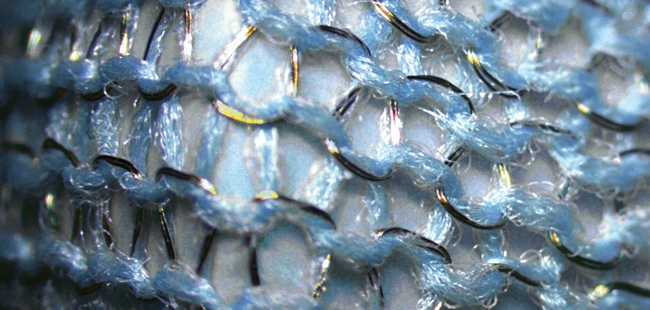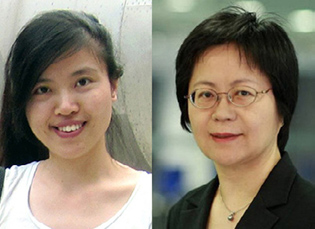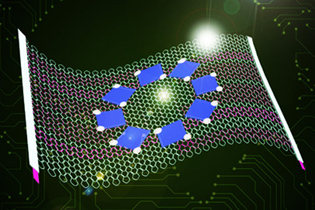intelligent apparel

Micro-structure of knitted fabric circuit boards
PolyU’s Institute of Textiles and Clothing has developed a textile with in-fabric wiring that can be worn, washed and folded like ordinary fabric, with the impressive addition of being bulletproof.


(Top)Prof. Tao Xiao-ming (right) and Dr Li Qiao (left),
(Below)Computerized image of fabric circuit board technology
Smart clothes have been rapidly developed over the last decade, ushering in a textile revolution. Yet, the knitted-in electrical wiring that integrates electronic components into the garments cannot cope with the moisture, heat and stress of machine washing.
With this limitation in mind, Prof. Tao Xiao-ming and Dr Li Qiao at PolyU’s Institute of Textiles and Clothing developed fabric circuit boards (FCBs) that are durable, permeable, soft and deformable, as well as highly stretchable and washable. With novel computerized textile technology, the FCBs are made by knitting a combination of multiple filaments of pre-stretched elastic yarn and polyurethane-coated copper fibres.
Exhibiting outstanding electrical stability with less than 1% relative resistance, the wearable FCBs not only have satisfactory washing capability and stretchability performance but have also passed various extreme-condition tests, withstanding 300% strain in unidirectional tensile testing and 150% membrane strain in three-dimensional ball punch testing. They have also been determined to have a fatigue life of more than 1,000,000 loading cycles.
Protective apparel made using the FCBs can even withstand ballistic impacts. In the future, the distinctive features of these innovative boards will make them particularly suitable for producing next-to-skin electronic devices and intelligent, durable military suits.
This innovation was recently reported in the Proceedings of the Royal Society A: Mathematical, Physical and Engineering Sciences. ♦
